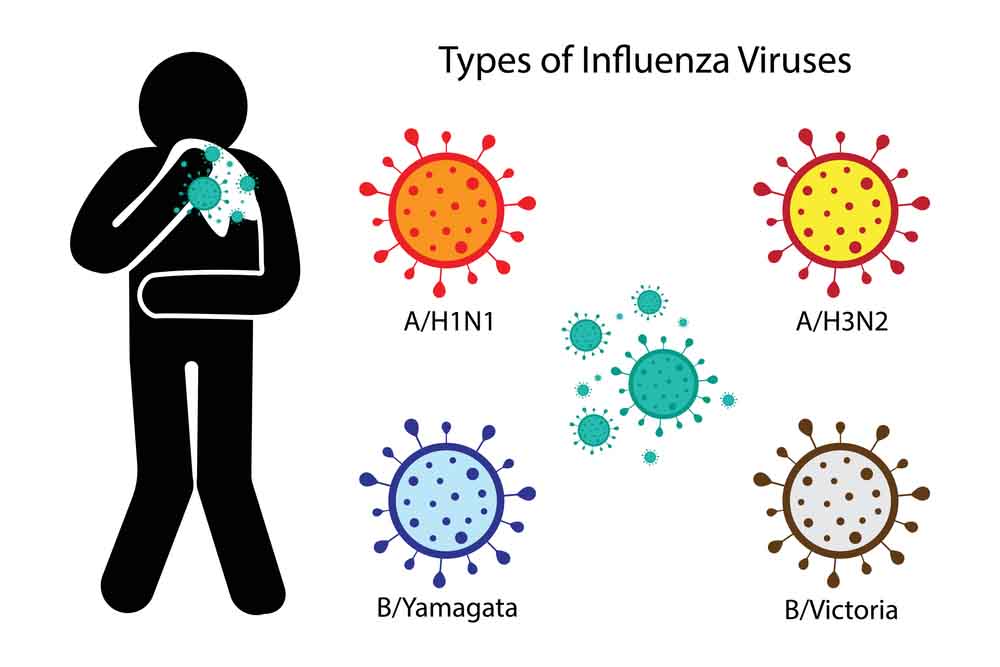Types

There are four groups of influenza viruses, called influenza A, B, C and D viruses, each of which can be further classified into subtypes. Here’s what you need to know about the types of influenza viruses.
Influenza A
As already discussed, type A influenza viruses are generally responsible for the majority of flu cases and typically cause the most serious illness. These are present both in humans and animals. They spread from person to person by people who have already been infected.
Touching the things the infected person has touched, such as doorknobs, hawks, and phones or just being in the same room as the infected person is enough to cause infection, particularly if they are coughing or sneezing.
Influenza B
Type B influenza viruses are found only in humans. They have the potential to be very dangerous in children, elderly, and immunocompromised persons, but cases are typically less serious than those affected with influenza A. Influenza B viruses can trigger epidemics, but not pandemics. Like the A viruses, influenza B disease can persist for a week or two.
Influenza C
Type C influenza is much milder than type A and type B and only affects humans. It causes mild respiratory diseases and is not known to have triggered any epidemics. Most people with influenza C may experience symptoms close to those of a cold. Even so, it may become severe in infants, elderly, and people with preexisting lung diseases or severely compromised immune symptoms.
In healthy people, it normally goes on its own in a few days. The outbreaks of influenza C often coexists with influenza A pandemics.
Influenza D
The influenza D virus is a relatively new strain of influenza viruses. It was isolated from pigs and cattle in 2011. Its cases have been reported in several countries, indicating worldwide distribution.
To date, there is no case of influenza D in humans, and it has not demonstrated the potential to move from animals to humans, although scientists believe that such a leap could be possible.
H1N1 (Swine Flu)
In 2009, scientists discovered a new strain of influenza A virus in Mexico, and they named it H1N1 (also known as swine flu).
The H1N1 influenza virus is a mixture of human, porcine, and bird flu. It was the world’s first flu pandemic in more than 40 years. Its structure is technically similar to influenza A virus, but it has so mutated itself that it has modified its structure from the influenza A that causes seasonal influenza.
H5N1 (Bird Flu)
Also known as avian influenza or bird flu, H5N1 is a strain of influenza virus that is usually transmitted between birds. However, it can be transferred from bird to person. Interestingly, it doesn’t move and cause infection from person to person.
When infecting humans, bird flu is associated with very severe disease, multi-organ failure, serious health complications, and high death rates. In fact, bird flu killed more than half of the people who were infected with it.

